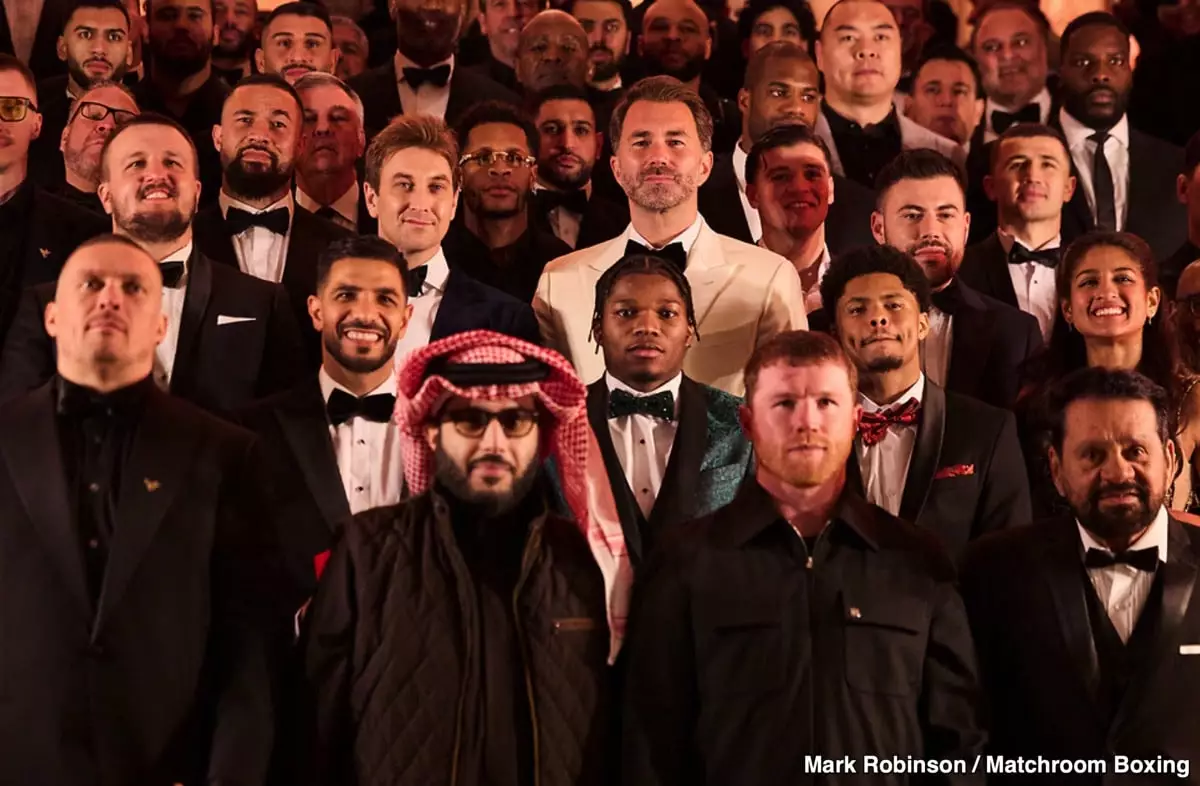In an unexpected, yet highly strategic move, Turki Alalshikh is reshaping the landscape of boxing journalism through The Ring Magazine. Instead of following the traditional media trajectory, this revamped publication is taking the reins, shaping narratives rather than merely reporting them. Recently, the abrupt transfer of Mike Coppinger from ESPN to The Ring has turned heads within the boxing community, presenting a textbook example of savvy maneuvering within the competitive sphere of sports journalism.
Coppinger has earned his reputation as one of boxing’s leading news-breakers over his career, becoming synonymous with high-profile fight announcements and exclusive insights. The significance of his shift back to The Ring, where he previously worked from 2017 to 2019, cannot be overstated. His ability to consistently scoop key stories has established him as an irreplaceable asset, contributing to his status as the go-to voice of boxing news. The abruptness of Coppinger’s move—apparently occurring with little fanfare—works well within Alalshikh’s game plan that emphasizes action over publicity.
Revitalizing a Legendary Brand
The Ring Magazine isn’t just a historical publication; it has now morphed into a multifaceted organization under Alalshikh’s guidance, blending both media and promotional aspects of the sport. Acquiring the magazine from Oscar De La Hoya’s Golden Boy Promotions for a reported $10 million, Alalshikh has leveraged this legacy to create a dynamic platform that appeals to modern boxing fanatics, while simultaneously preserving its revered heritage. The shift heralds a new era: The Ring is no longer a passive observer of boxing dynamics but a driving force within the sport itself.
This transition is bolstered by a clear and ambitious vision. The strategic acquisition of Coppinger is not merely about bolstering their news reporting capabilities but reflects a broader intent to lead the boxing narrative. Under Alalshikh, The Ring is set to capitalize on its revived cultural capital, shaking off its image as a relic of the past and asserting its relevance in contemporary boxing discourse.
An Unprecedented Growth Strategy
Alalshikh’s development strategy for The Ring is not limited to mere journalism; it includes a vibrant live event portfolio designed to engage fans directly. Upcoming events—like a major card at Times Square featuring a lineup of high-profile fighters and the transformative Canelo vs. Crawford bout—demonstrate a commitment to interactivity and fan engagement that traditional media outlets often overlook. This proactive approach ensures that The Ring not only reports on boxing but becomes a crucial participant in its ongoing evolution.
Moreover, the ambitious collaborations featuring Dana White and Nick Khan to launch a new boxing league further solidify Alalshikh’s ambitious blueprint. In a sport riddled with promoters and competing narratives, his moves signal an intent to unify disparate elements of the boxing world, creating an unprecedented synergy. Alalshikh isn’t merely playing the game; he is reimagining the rules.
Impact on the Competition
The ramifications of this shift are significant. By recruiting Coppinger, Alalshikh has not only gained a prolific reporter but has also stripped ESPN of its key boxing voice. The ramifications extend to every corner of the boxing media landscape, forcing outlets to rethink their strategies amid the rapid ascendancy of The Ring Magazine. Other media entities can no longer simply report; they must innovate, adapt and counter this dynamic reconfiguration of the boxing narrative.
The silence surrounding the announcement of Coppinger’s move is telling; it embodies the dominance and confidence that Alalshikh exudes. The displacement of established figures without a robust public relations campaign demonstrates that, under Alalshikh, The Ring is focused on results over image. By controlling the essential flow of information and slating significant fights, he is carving a path that is emblematic of a leader determined to redefine how boxing is experienced both in and out of the ring.
Turki Alalshikh’s vision for The Ring Magazine is more than just a facelift; it’s a bold statement against thenorm of boxing journalism and promotion, positioning the magazine at the epicenter of the sport’s future. The leadership transition hints not only at a new chapter for The Ring, but also at the dawn of a revolutionary era in boxing—all driven by the singular intent to dominate the narrative and redefine the sport’s landscape.


Leave a Reply